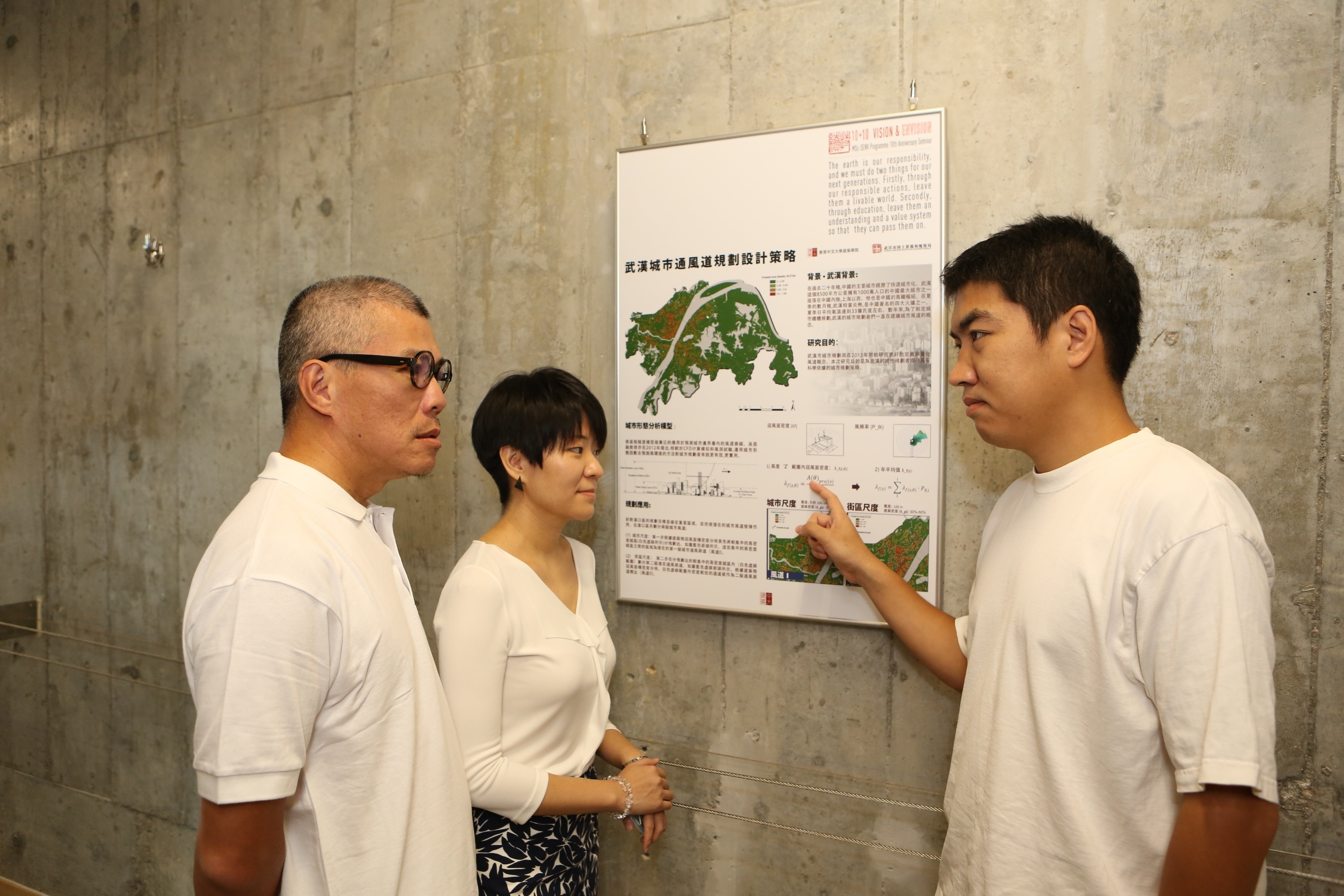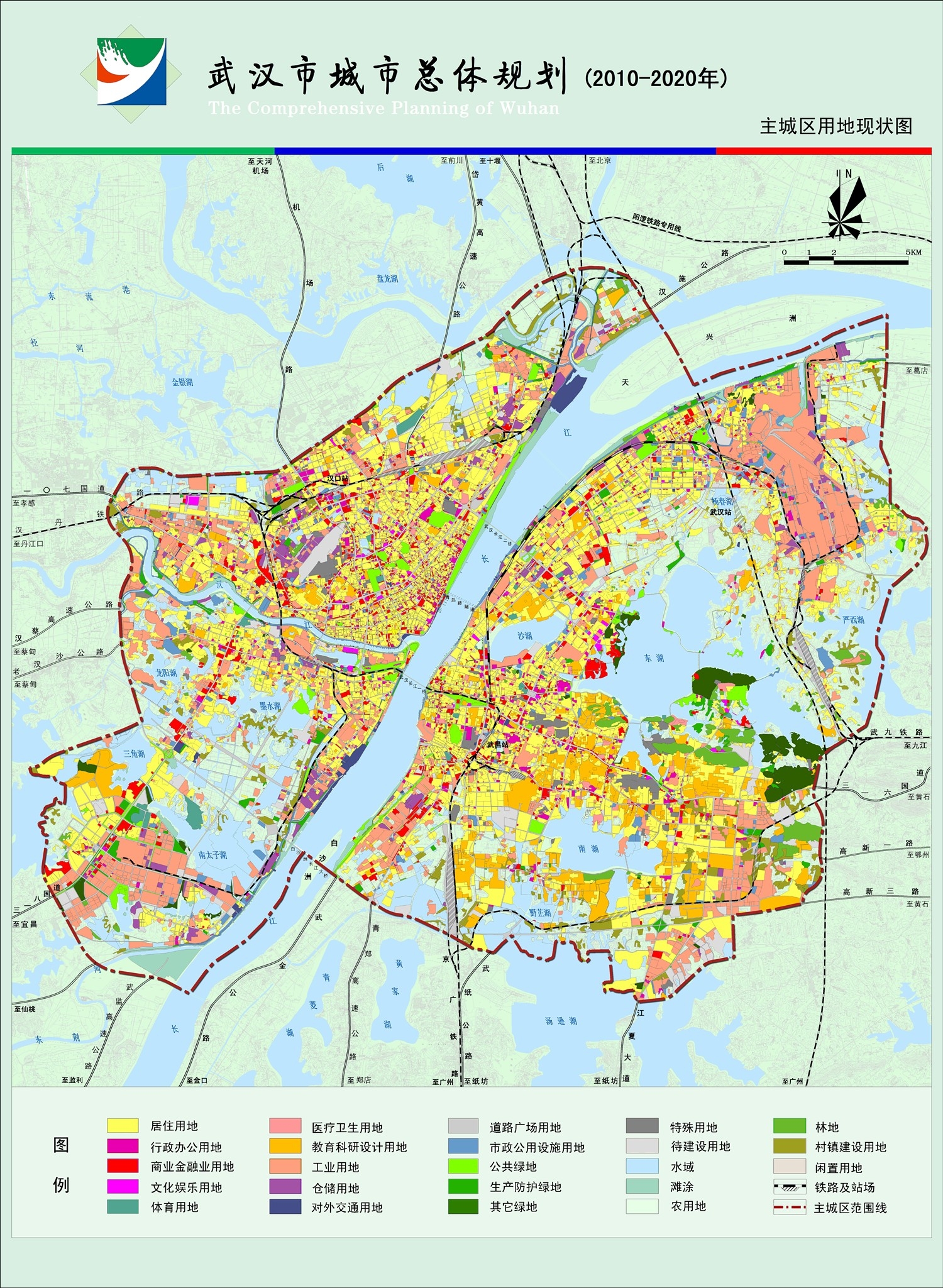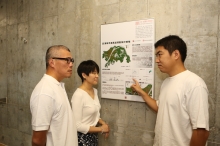CUHK
News Centre
CUHK Researchers Help Cooling Chinese Cities
In 2012, Professor Edward NG Yan-yung from the School of Architecture, The Chinese University of Hong Kong (CUHK) and his research team were invited by the Wuhan Land Resources and Planning Bureau to start a research study on the planning and management of urban ventilation corridors in Wuhan, which aims to quantify the urban form, understand the urban air permeability, and develop the Master Plan for Wuhan Urban Ventilation Corridors. The Wuhan Municipal Government has subsequently incorporated Professor Ng’s plan into its official regulatory framework for the first time. After the implementation of the Wuhan Urban Ventilation Corridor Plan, several air paths will be preserved in densely built Hankou while overall building density will be of particular focus in areas of lower building density such as Wuchang and Hanyang.
Rising concern over urban air ventilation
Urbanization has increased vastly worldwide in recent decades. It is associated with extensive conversion of the rural landscape into urban settlements, the heightening of urban density, deteriorating air quality, intensified urban heat islands, and even ‘wall buildings’ and the street canyon effect. A wide range of research studies about urban ventilation corridors have been carried out in order to improve urban air quality and street-level thermal comfort in western countries. In 2003, Professor Edward Ng was commissioned by the HKSAR Planning Department to do a Feasibility Study for the Establishment of an Air Ventilation Assessment System, in response to the public concern about urban air ventilation after the SARS outbreak. Completed in 2005, the findings and recommendations were adopted and incorporated into the Hong Kong Planning Standards and Guidelines (HKPSG) and a joint Technical Circular on air ventilation assessment systems was issued requiring all governmental projects to adhere to the assessment methodology.
Chinese cities have recently experienced rapid urban development. This results in the frequent occurrence of dust haze events which affect approximately one-seventh of urban areas and cause deterioration in public health. There is an increasing public demand to preserve urban ventilation corridors in order to disperse such dust hazes. Hangzhou Meteorological Bureau began preparation for the introduction of an urban ventilation corridor last November and a number of cities, including Shanghai, Nanjing, Zhuzhou, Guiyang, Shaoxing and Fuzhou are following suit.
From academic research to urban planning policy
By employing a geographic information system (GIS) platform, Professor Ng’s study for the Wuhan Municipal Government analyses the prevailing wind directions in the city, calculates the surface roughness and frontal area density of urban structures and visualizes the wind permeability in urban areas. The Wuhan Municipal Government has subsequently incorporated the planning of urban ventilation corridors into its official regulatory framework for the first time. Preliminary analysis showed that wind speed is rather low (2.7 m/s for most of the time) in Wuhan, particularly in the most densely built areas in Hankou. After the implementation of the Wuhan Urban Ventilation Corridor Plan, several air paths will be preserved in densely built Hankou while overall building density will be of particular focus in areas of lower building density such as Wuchang and Hanyang.
Distinct from previous studies of urban ventilation corridors which largely remained at the research stage, the Wuhan Urban Ventilation Corridor Plan, led by Professor Ng, focuses on the implementation of a planning and legal framework. It also makes reference to the implementation of the Air Ventilation Assessment System in Hong Kong, which requires the preservation of air paths in district plans for the future. Any buildings with large vertical surfaces perpendicular to ventilation corridors will not be approved due to potential blockage of major air paths. Both studies have emerged from academic research and influence urban planning policy which will eventually improve environmental quality and create a more sustainable living environment.
Professional training in sustainable design and green architecture needed
Under the impact of future climate change, the need for sustainable and environmental design for better energy efficiency has become an issue encountered by governments and professional practitioners worldwide. In Hong Kong, the concept of sustainable development has received increasing attention. Led by the HKSAR Development Bureau (DevB), the Hong Kong Green Building Council (HKGBC) was established in 2009 to promote the standards and development of sustainable buildings in Hong Kong. Moreover, the government offers various incentives to developers to adopt sustainable building design in their development projects.
Professor Ng said, ‘While expertise in this particular area is in enormous demand, there is a lack of relevant and comprehensive training programmes. Early in 2003, we envisioned such a huge demand and therefore established the Master of Science Program in Sustainable and Environmental Design in the School of Architecture (formerly known as Department of Architecture) at CUHK, to provide comprehensive and professional training based on the climate regions of Hong Kong, mainland China and Southeast Asia.’
The program is composed of a wide range of global expertise in order to allow students to utilize that knowledge to improve the urban climate. Professor Ng also integrates his research experience in air paths into the course curriculum so that students can obtain the latest information and know about the development of associated policies in different countries. Such an arrangement considerably improves students’ vision and competitiveness. Professor Ng said, ‘Scientific research provides new insights into climate science while education allows the inheritance of knowledge in sustainable design and green architecture. They complement each other and benefit the future of humanity.’
Prof. Edward Ng Yan Yung (left), Prof. Ren Chao (middle) and Dr. Yuan Chao (right) discuss on air ventilation of Wuhan.





